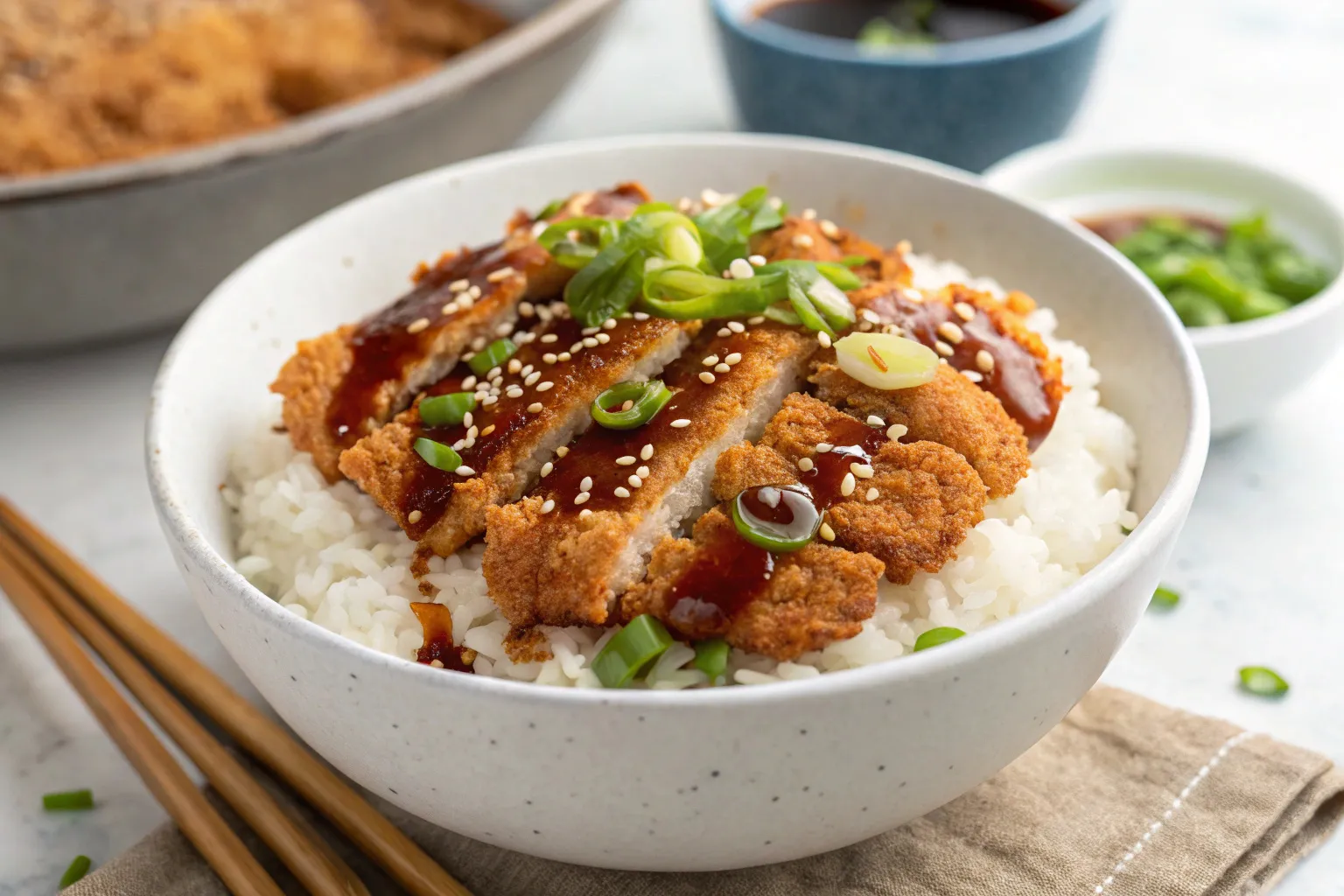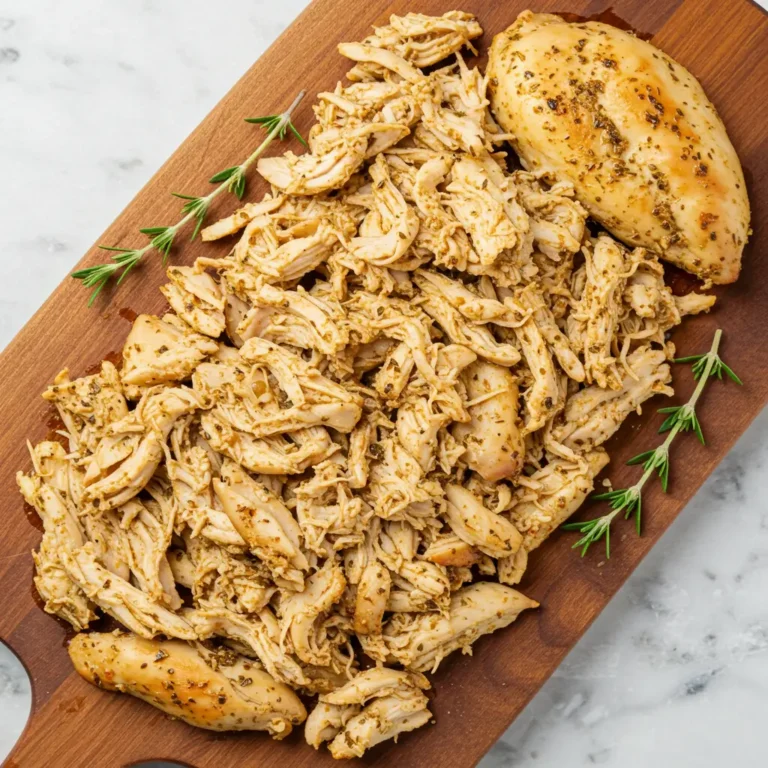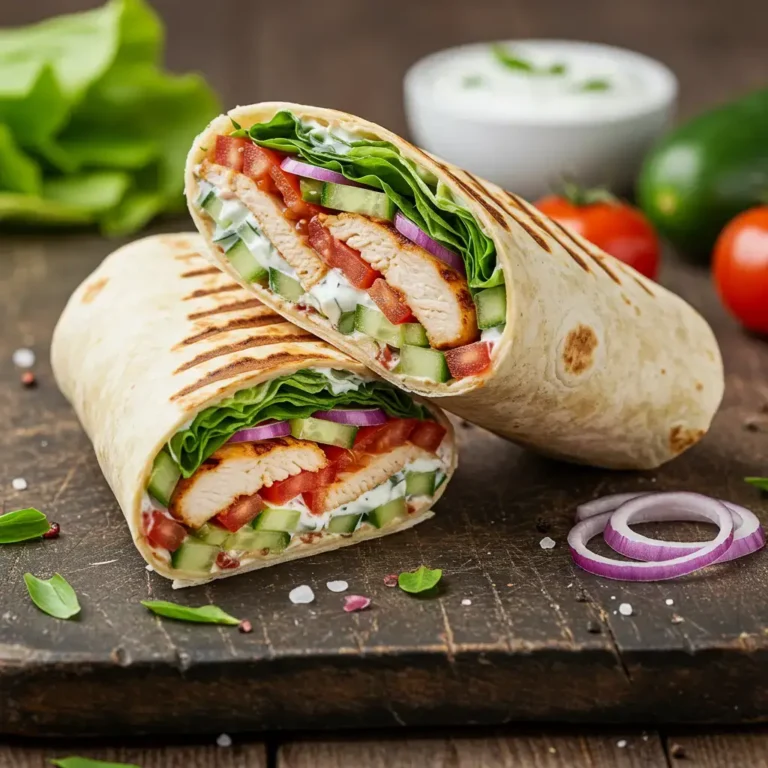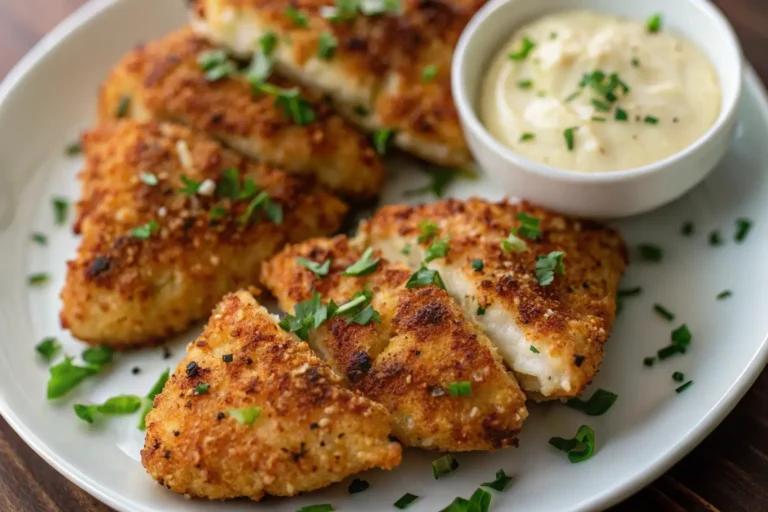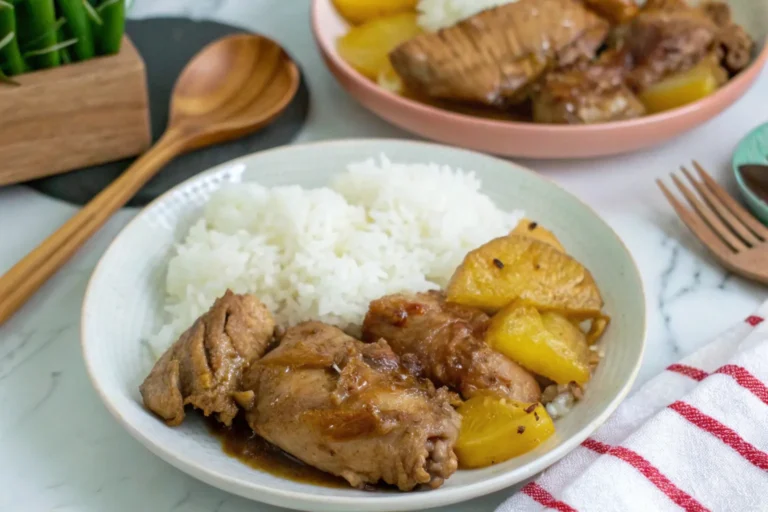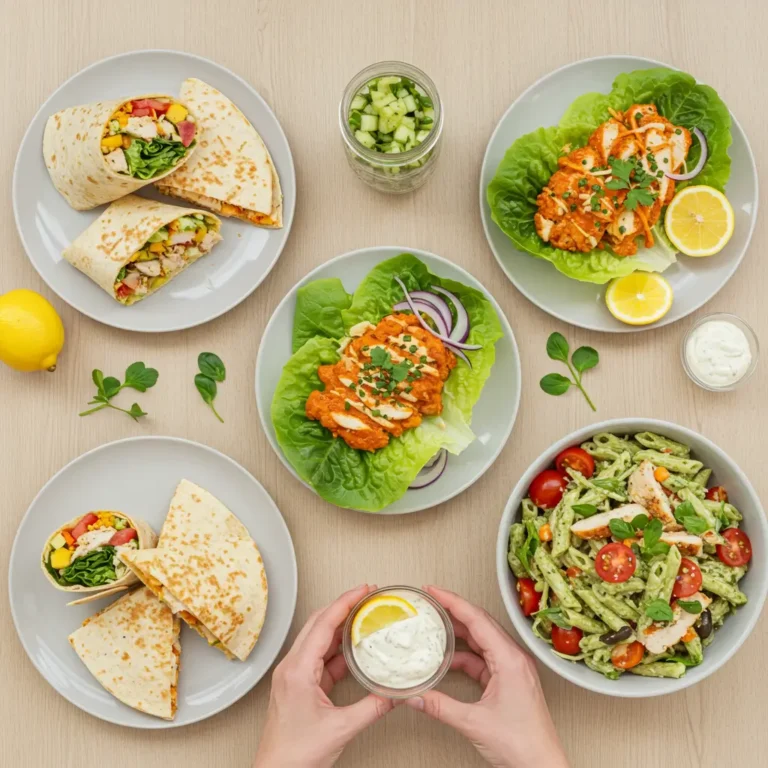Easy Chicken Katsu Bowl – A Crispy Japanese Classic
The first time I tried a chicken katsu bowl, it changed my cooking world. This Japanese dish is more than a meal. It’s a mix of crispy, flavorful goodness that brings comfort and excitement together.
This dish is unique because of its texture and taste. Every bite is crunchy from the breaded chicken, tender meat, and a sauce that brings it all together. The chicken katsu bowl is more than food. It’s a journey that connects cultures through simple yet delicious flavors.
Table of Contents
Why This Japanese Comfort Food Became My Favorite Dish
My journey with chicken katsu started during a deep dive into Asian cuisine. It was more than just a meal; it was a love affair with a dish that goes beyond food.
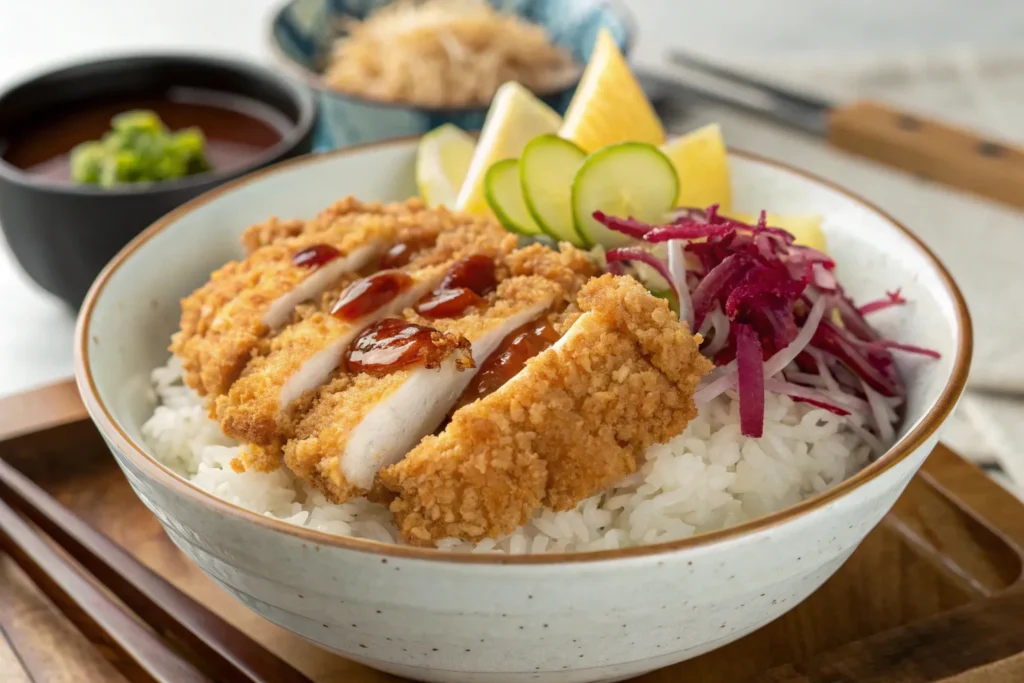
The Cultural Significance of Katsu
Katsu is more than a meal in Japanese culture. It’s a dish that combines Western and Japanese flavors, showing how cultures blend through food. It’s a symbol of innovation and cultural exchange.
- Originated during the Meiji era
- Combines European breading techniques
- Represents cultural fusion in cuisine
My Journey with Japanese Cuisine
My first try of chicken katsu was magical. The golden-brown outside and the rich tonkatsu sauce made it unforgettable. It was a comfort food that touched my heart.
What Makes Chicken Katsu Special
Chicken katsu is a standout in Asian cuisine. Its special preparation turns a simple chicken cutlet into a crispy, tasty dish. It’s both nutritious and delicious, making it a favorite for many.
- Crispy exterior
- Tender chicken interior
- Balanced nutritional profile
Every bite tells a story of culinary tradition and innovation.
Essential Ingredients for the Perfect Chicken Katsu Bowl
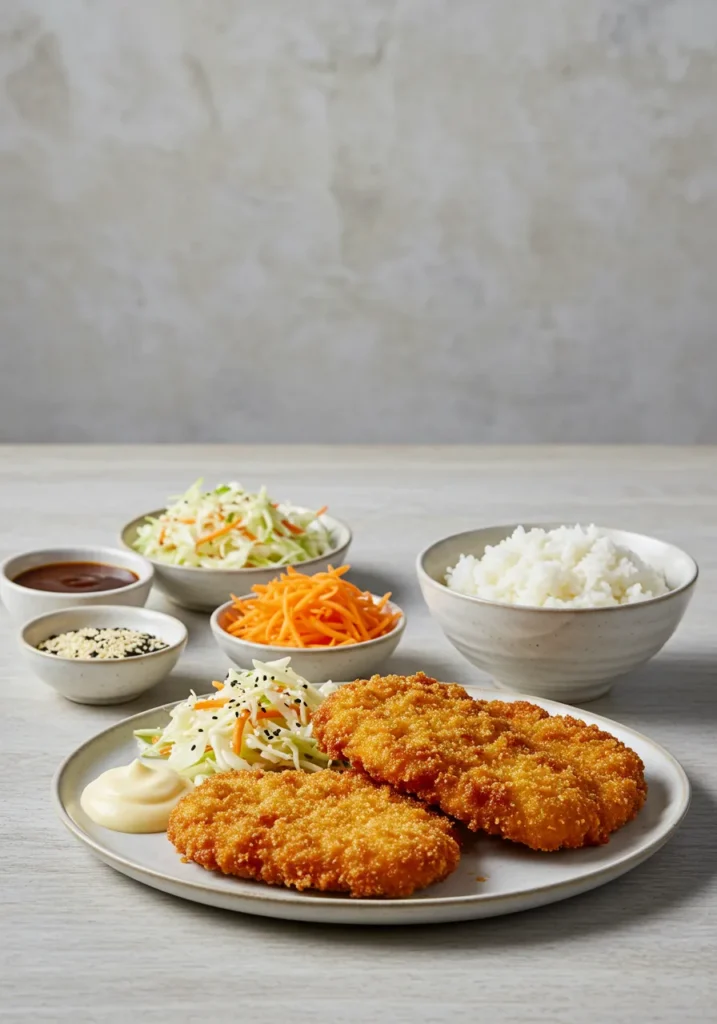
To make a real katsu bowl, you need to pick the best ingredients. The key to a great rice bowl is using the right parts. These parts make the whole dish better.
Here are the must-haves:
- Chicken: Choose boneless, skinless chicken breasts for the best texture
- Panko breading: The secret to achieving that signature crispy exterior
- Japanese short-grain rice: Creates the perfect base for your rice bowl
- Tonkatsu sauce: Brings a tangy and rich flavor profile
Panko breading is a game-changer. It’s different from regular breadcrumbs because it makes the chicken crispy but light. This turns simple chicken into a meal fit for a restaurant.
My favorite part is mixing the flavors. The crispy chicken goes on top of steamed rice, with homemade tonkatsu sauce. This mix of textures and tastes is what makes it special.
Here are some great garnishes:
- Thinly sliced green onions
- Toasted sesame seeds
- Pickled vegetables
- Shredded cabbage
By picking each ingredient with care, you turn a simple rice bowl into a feast. It brings Japanese flavors right to your home.
Mastering the Crispy Panko Breading Technique
Creating perfect Japanese fried chicken is an art. It starts with mastering panko breading. The right technique turns a simple dish into a crispy, golden masterpiece.
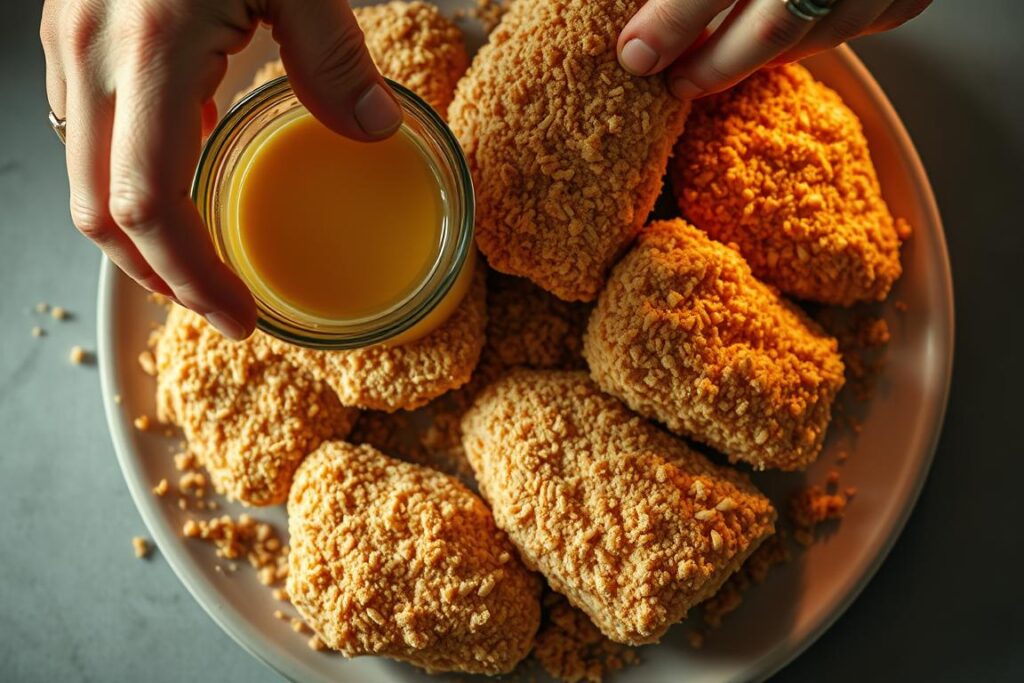
The secret to great panko breading is in a few steps. These steps take your chicken katsu from good to extraordinary. Here are the techniques that have changed my cooking:
Double-Coating Method
The double-coating method is key for that signature crunch. Here’s how I do it:
- Prepare three shallow dishes: flour, beaten eggs, and panko breadcrumbs
- Coat chicken first in flour, shaking off excess
- Dip chicken in egg wash, ensuring complete coverage
- Roll chicken in panko breadcrumbs, pressing gently to adhere
- Pro tip: Repeat the egg and panko steps for extra crispiness
Temperature Control Tips
Keeping the right oil temperature is vital for perfect Japanese fried chicken. Use a deep-fry thermometer to keep the oil at 350-375°F. This ensures a crispy exterior without burning the panko breading.
Achieving Golden-Brown Perfection
The visual cues are your best guide to crispy chicken katsu. Look for a rich, golden-brown color. This signals a perfectly cooked piece of chicken. It usually takes about 3-4 minutes per side, depending on the chicken cutlet’s thickness.
How to Build Your Chicken Katsu Bowl
Making a chicken katsu rice bowl is like creating a work of art. It’s all about the flavors, textures, and how it looks. Start with the right rice. Japanese short-grain rice is the best choice for its taste and feel.
Here’s how to make a fantastic chicken katsu bowl:
- Start with a base of fluffy white rice
- Place your crispy chicken katsu at an angle for visual interest
- Add colorful vegetables for nutrition and crunch
- Drizzle tonkatsu sauce for extra flavor
For a bento box-style meal, separate your ingredients. This makes meal prep easier. Keep your chicken, rice, and veggies in their own sections to keep their textures.
Want to make your rice bowl even better? Try these garnishes:
- Furikake seasoning for a burst of umami
- Pickled vegetables for tang
- Soft-boiled egg for extra richness
- Sliced green onions for freshness
Looking for a restaurant-quality chicken dish that takes minutes to make? This cheesy, crispy delight is the answer
Signature Tonkatsu Sauce and Accompaniments
Two key things make your chicken katsu bowl amazing: the right sauce and great sides. In Asian cooking, tonkatsu sauce is key. It turns a simple dish into a comfort food favorite.
Homemade Tonkatsu Sauce Recipe
Making your own tonkatsu sauce is simple. Here’s a recipe that adds real flavor:
- 1/2 cup ketchup
- 2 tablespoons Worcestershire sauce
- 1 tablespoon soy sauce
- 1 teaspoon sugar
- Optional: 1 teaspoon grated ginger
Just mix these ingredients until smooth. You get a tangy, rich sauce that’s perfect with crispy chicken katsu.
Traditional Side Dishes
Choosing the right sides can make your meal even better. Here are some classic options:
- Steamed rice
- Shredded cabbage
- Pickled vegetables
- Miso soup
Plating Like a Pro
How you present your dish matters. Place your chicken katsu at an angle. Drizzle tonkatsu sauce in a pretty pattern. Add some chopped green onions for color. Aim for a dish that looks as good as it tastes.
Conclusion
I hope you try out the techniques and tips from this guide. Cooking is about creating memorable experiences. Your homemade chicken katsu bowl can open doors to Japanese and Asian cooking, bringing restaurant-quality flavors to your home.
Begin your chicken katsu bowl journey today. With patience, passion, and the right ingredients, you’ll make a dish that’s both simple and unforgettable. It will connect you to a world of vibrant flavors.
FAQ
What makes chicken katsu different from other fried chicken?
Chicken katsu uses Japanese-style panko breading. This makes it incredibly crispy and light. The double-coating with panko breadcrumbs gives it a unique texture.
Is chicken katsu difficult to make at home?
No, it’s not hard at all! With the right breading and frying technique, you can make it just like restaurants. Just keep the oil temperature right and use a double-coating for extra crispiness.
What ingredients do I need to make a chicken katsu bowl?
You’ll need chicken breasts, panko breadcrumbs, eggs, flour, rice, tonkatsu sauce, and optional vegetables. Don’t forget salt, pepper, and cooking oil. Adding shredded cabbage or pickled vegetables makes it even better.
Can I make chicken katsu bowl ahead of time?
Yes, you can! Prepare the chicken in advance and store it in the fridge. Reheat it in an oven or air fryer to keep it crispy. You can also prep the rice and vegetables ahead, making it perfect for quick meals.
Is chicken katsu a healthy meal option?
It’s tasty but not the lightest option. Baking instead of frying and using lean chicken breast can make it healthier. Adding fresh vegetables makes it even better.
What’s the best sauce to serve with chicken katsu?
Tonkatsu sauce is the top choice. It’s tangy and sweet, perfect with the crispy chicken. You can also make a similar sauce at home with Worcestershire, ketchup, soy sauce, and sugar.
Can I use different types of protein in a katsu bowl?
Yes, you can! Try pork (tonkatsu), fish, or tofu for a vegetarian option. Each protein adds its own flavor and texture, letting you find your favorite.
Did this recipe work for you? We’d love to hear how it turned out!
There are no reviews yet. Be the first one to write one.

